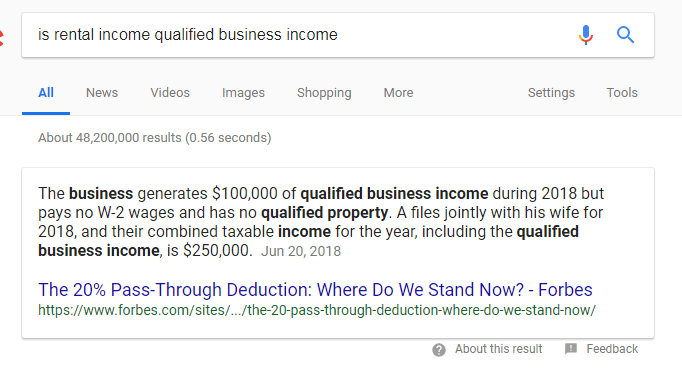SEO Guides, Tips & More!
Learn from Our Experience
How Do I Rank for Position 0?
Google regularly enhances and adds to its search engine result page (SERP) features. One of the most interesting features that’s noticed by marketers is position 0. This is the small box that appears at the top of the SERP when someone conducts a search based on a question. To enhance the user experience (UX) Google reviews millions of webpages that answer the searcher’s question and presents those answers at the top of the page. It’s very desirable to attain position 0 (technically called a featured snippet) because it is gold for visibility. Let’s face it more searchers will see your website because your content is prominently featured at the top of the SERP. It also allows your site to get more traffic and boosts the trust and credibility of your website. This is great news for the website and SEO efforts but has many asking the question…
How Do I Rank for Position 0?
It is recommended that:
- The answer to the question should be summarized in a single paragraph.
- Make the question a keyword term and heading on the page and place the answer directly below the heading.
- Use images to supplement and explain your answer as needed.
Position Zero Example

Content in Featured Snippets
There are three types of featured snippets that are used by Google to populate position 0 including paragraph, recipe, and tables. While most companies aren’t in the business of publishing recipes, they can take the essential concepts essential to their customers and break them down with an explanation in paragraph form or use tables to convey the basics of a complex idea. Tables are excellent for explaining complex concepts, processes or other information valuable to your customers. There is no lack of opportunity for most businesses.

Common Ranking Questions
- How do I Uncover Featured Snippet Opportunities? The first step to finding opportunities for your firm is to open your browser and go to Google. Think about the potential questions that your targets may search on Google. If you are focusing on doctors that need assistance with tax planning maybe enter, “Do doctors qualify for Section 199a?” The good thing about Google is that it will show you what featured snippet is currently being used for this term. If there isn’t anything listed, then look down the page to see the “People Also Ask” section. This where Google will show you a list of related searches to your topic and often some of those are questions. Find the questions that are the most relevant to your firm’s services and make a short list of questions to answer. These can be used and published as blog posts or part of other content on your website.

- How Should I Write Content for Featured Snippets? It’s important to note that once Google selects a piece of content as a featured snippet it’s more likely to be selected to be a featured snippet for other questions. For this reason, it makes sense to develop content that answers multiple questions (related ones of course). While there are benefits to writing each question as an individual parcel of content and then providing the answer in a short and concise format, it’s better when trying to rank for position 0 to follow the approach of answering multiple questions. It opens the door to Google using the same page for several featured snippets.
- How Long Should Answers Be? It’s important to note that the answer is provided at the beginning of the blog or top of your piece of content. This will allow Google to quickly find and review your answer without having to dig into the content. If you use this blog as an example, note the answer to the question appears in the second paragraph and we use the rest of the blog to explain the components of the answer. Therefore, be sure to provide an answer immediately and that the information provided doesn’t exceed 55 words as this is the average length of a featured snippet. Remember, keep it brief and direct. Use the rest of the content to explain the critical concepts necessary to understand the answer.
- What about Headers? While header tags such as H1, H2 and so on are essential components for on-page organic SEO, they are also important for this featured snippets as well. Remember, that Google will review the entire page and look for content that can be used in position 0. For this reason, it’s important to break apart content into relevant sections to ensure it’s clear how this content relates to the rest of the article, but also to organize each section. If you are using the terms step 1, step 2, or Rule 1, Rule 2, these can be tagged with H1 or H2. (Tip – before doing this test your H1 tag to see what happens when you apply it as tagging can impact the font size and color. It’s important to test any changes made to the formatting prior to publishing content to avoid unexpected formatting results).
- Do I Need Images? – One error that many are guilty of (us included) is relying too much on words to convey a message. Remember that people can understand and learn a concept very quickly using visual or other image-based content. Not only does it dress up a page and make it look more compelling to the eye, but it also makes it easier for the reader to understand key points on the page quickly. Images are an excellent way to summarize a process or show how each step in the process ties into the bigger picture. If you are conveying a complex process, it is very helpful to include some type of imagery to show how each piece ties into the bigger theme.
- What about Organic SERP Position? – There have been several studies that show a website needs to be positioned in the top 10 (on page 1 of Google) for a search term to qualify for Position 0. In fact, a study on featured snippets revealed that 99.58% of featured snippets are taken from organic results on page 1. So organic SERP position does a play a role in getting content considered by Google for inclusion. However, this doesn’t mean your content needs to rank #1 in order to be selected by Google (which is a welcome sigh of relief for me anyway). Another study on featured snippets conducted by GetStats shows that 70% of snippets come from sites that are not in the #1 position organically. As an aside, the study conducted by HREFs concluded that websites publishing content on the topics of do it yourself (DIY), health or finance, have the greatest opportunity to capture featured snippet opportunities.

It’s important to understand that incorporating question-based terms into your content marketing strategy may not yield immediate results. If your firm has not used this approach before we recommend gradually mixing this approach with others you are using. Over time you (or your SEO agency) can begin tracking where the firm is ranking for position 0. There are several software packages such as Moz or SEMrush that incorporate the ability to track where sites are in the ranks.
Below is a brief video from the Medical Marketing Minute on how (in this case medical professionals such as dentists, doctors, etc) can position their content for inclusion in Position 0.
What Works for You?
What tips and pointers do you have about ranking for Position 0? Share your success stories below!

